Backyard Birds: Create a Home for American Kestrels
http://decor-ideas.org 10/02/2015 02:13 Decor Ideas
The American kestrel is the smallest falcon in North America and one of our fiercest predators of invertebrates, small rodents and small birds. The male of this species has a distinctive slate-blue head with a rust-colored back and unique black markings. Did you know the American kestrel can see ultraviolet light? This enables them to locate the urine trails produced by one of their favorite prey, field voles. Learn more about these fascinating birds below.
More Backyard Birds: Warblers | American Goldfinches | Hummingbirds
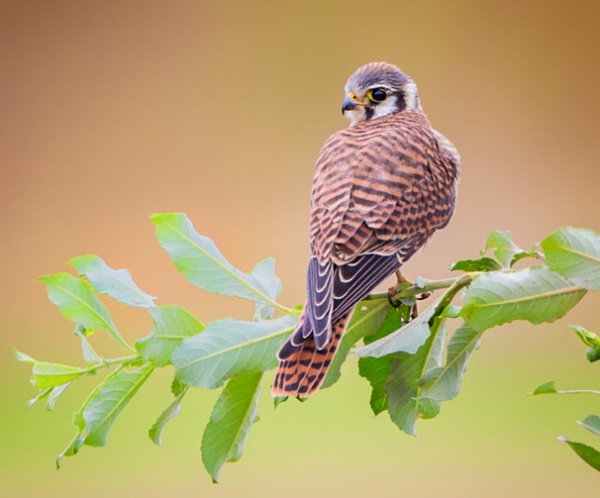
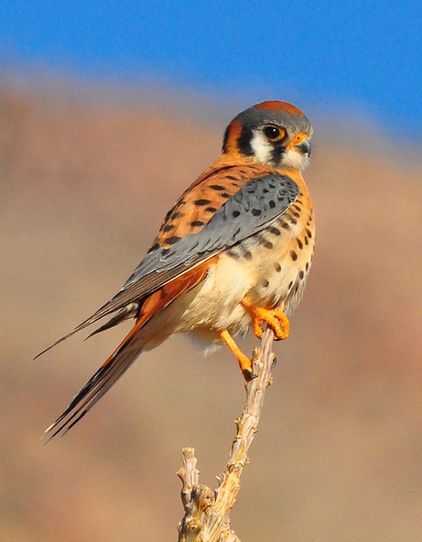
Order: Falconiformes
Latin name: Falco sparverius
Common name: American kestrel
Distribution: The American kestrel can be found year-round throughout many parts of North and South America.
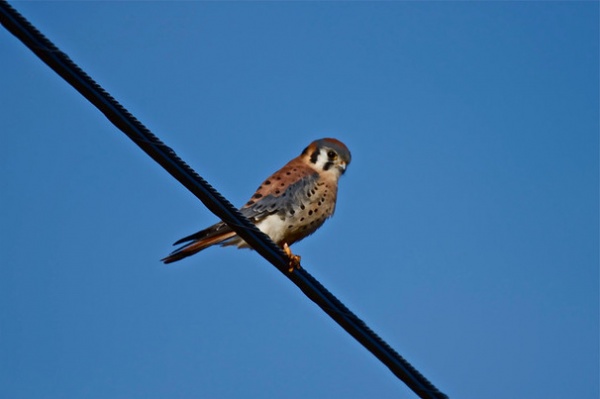
Habitat: American kestrels are one of many birds attracted to habitats that are disturbed by human activity, including pastureland, parkland and urban areas. Like most raptors, they prefer open areas with sparse vegetation and a handful of standing trees.
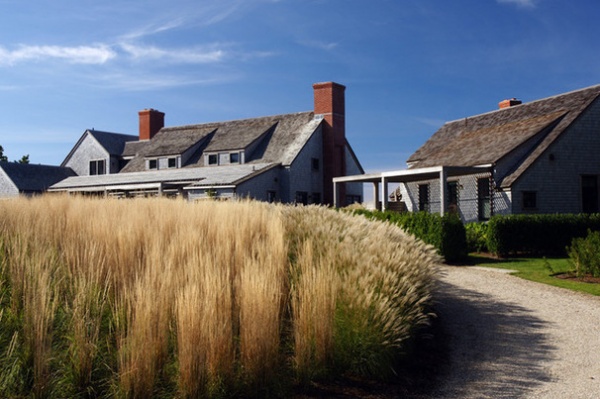
These habitat characteristics allow the hunters ample opportunity to perch and watch for prey. Open, shrubby fields provide habitat for kestrels to hide larger, surplus small-mammal meals for later in the season when their favored food — invertebrates — is sparser. They tend to hide food in dense grasses and shrubbery, tree roots and tree cavities.
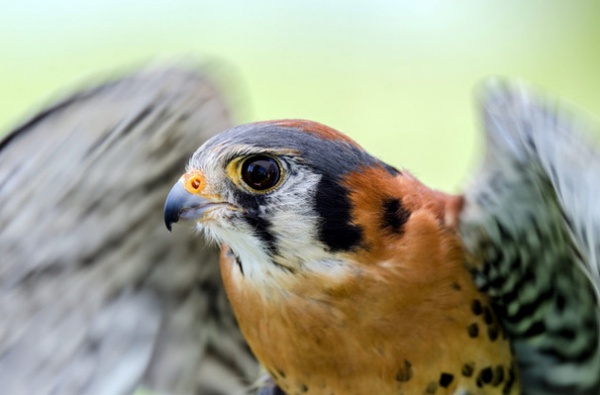
When to look for them. Some enjoy the northern latitudes of Canada in the summer and migrate to spend their winters in the southern United States, Mexico or Central America. They can be seen as far north as Canada and Alaska, and as far south as the tip of South America. Explore eBird’s range map for the American kestrel to learn more about these ubiquitous raptors of the Americas.
How to spot American kestrels. Male American kestrels’ dominating colors are like those of a beautiful, weathered penny. They have a coppery-colored back and tail, accompanied by bluish-gray wings and head. Black and white streaks on their face and black speckles covering much of their body mix with these vibrant colors.
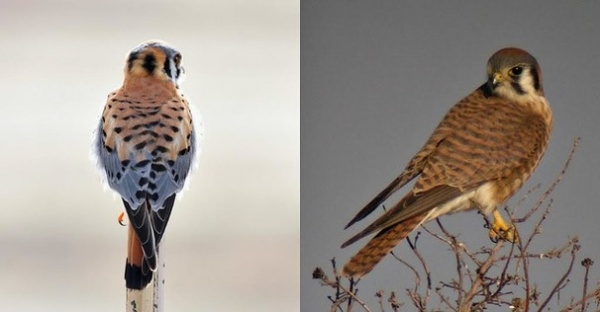
Females, like the one here on the right, are slightly less showy than males but equally regal, with a tannish-red wing pattern instead of the blue. Like the male kestrel, shown at left, females show off a blue-slate head with unique black and white markings. The female’s chest reveals more brown and white streaking than the male’s, which has black, white and brown feathers.
Both sexes are no longer than 12 inches, head to tail, and weigh less than half a pound. This small size and light weight help make them quick, stealthy predators.
Photos by Dominic Sherony, left, and Len Blumin
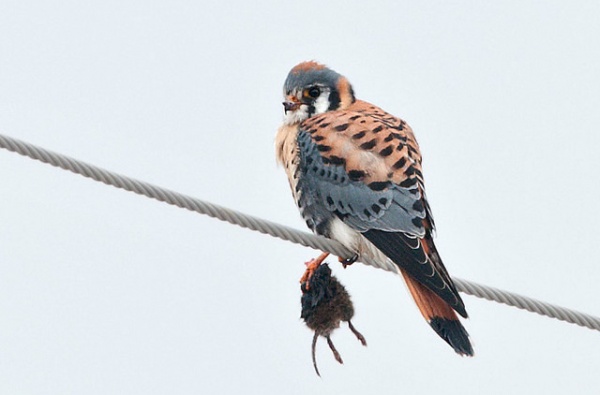
How to Attract American Kestrels
Offer the ideal habitat. The secret to attracting American kestrels is providing an ideal hunting habitat of open woodlands and fields rich in thick native grasses, shrubbery and trees. Species of these particular plants will attract a diversity of insects, such as grasshoppers, cicadas, beetles and dragonflies; or arachnids, such as scorpions and spiders. Kestrels also favor areas rich in small mammals, like voles, mice, shrews, bats and songbirds.
How to Find the Right Native Plants for Your Yard
Photo by Kelly Colgan Azar
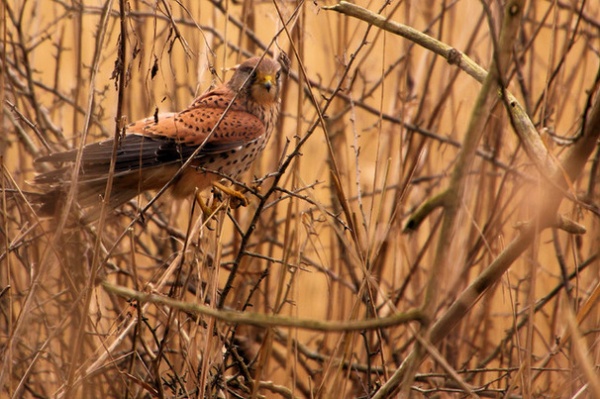
The denseness of shrubbery, in addition to providing hiding spaces for extra food, also allows kestrels a place to hunker down in foul weather or hide from stalking predators. American kestrels are constantly on the lookout and moving their location, since they can easily become prey to larger raptors, such as northern goshawks, red-tailed hawks, barn owls and Cooper’s hawks.
Photo by Airwolfhound

Kestrels prefer this open habitat for diurnal (daytime) hunting because, as depicted, after perching and watching for an ideal catch, they will swoop and clasp prey in their talons. They may fly off with larger prey, like this snake, or sit and consume their catch on the ground while keeping a lookout for interfering and opportunistic thieves or a lurking predator trying to make a meal out of them.
Photo by Kevin Cole
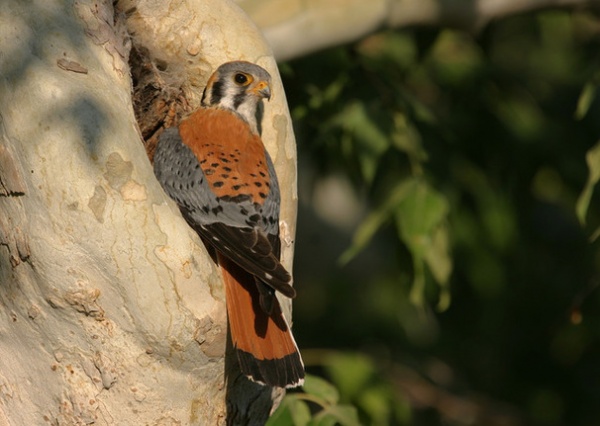
Male kestrels are the nest finders, while the female kestrels are the approvers. The male American kestrels will investigate abandoned old nest cavities, natural tree hollows, rock crevices and nooks in human-built structures. Once he has picked one, he will show it to his mate, and she will decide whether to call the place home for the nesting period. If yes, neither of them spend any time collecting nesting material. Instead, they just move aside existing debris and lay their eggs (usually four or five) right at the bottom of the cavity. It is common for kestrels to have one or two broods per nesting season.
Photo by Gregory “Slobirdr” Smith
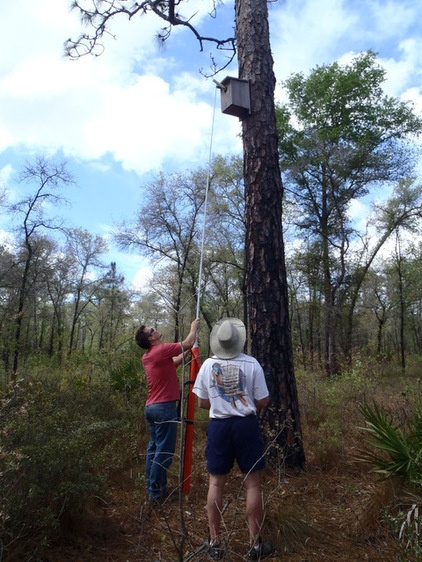
Consider a nest box. Kestrels are also known to use nesting boxes installed by conservation groups and homeowners. They require unique specifications to be considered acceptable by American kestrels seeking a safe place to raise their young. If these birds frequent your community, installing a nesting box is an excellent addition to your yard. American kestrel populations are in decline in many parts of the United States, making any efforts more than worthwhile.
Photo by Florida Fish and Wildlife
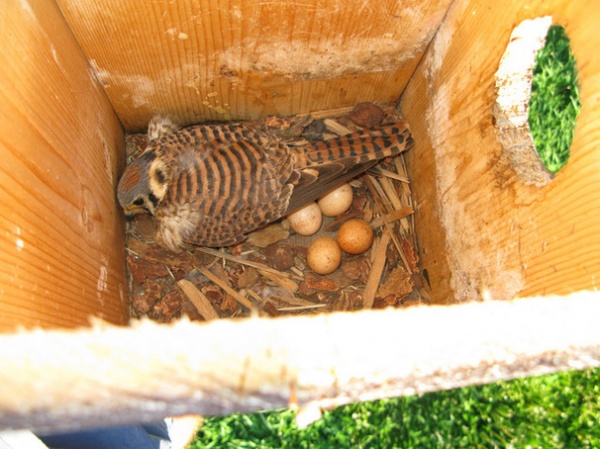
The nest box needs to be placed on a tree or pole 10 to 30 feet off the ground. The entrance hole should be 3 inches in diameter, with a depth of 14 inches.
For more information on the specifics of an ideal American kestrel nest box, visit Nestwatch, a Cornell Lab of Ornithology citizen science project, where you can download specific nest box plans for kestrels. Building accurate nest boxes is a fun activity to engage youth, community groups or eager bird-watchers, while teaching them important bird ecology.
Photo by megankhines
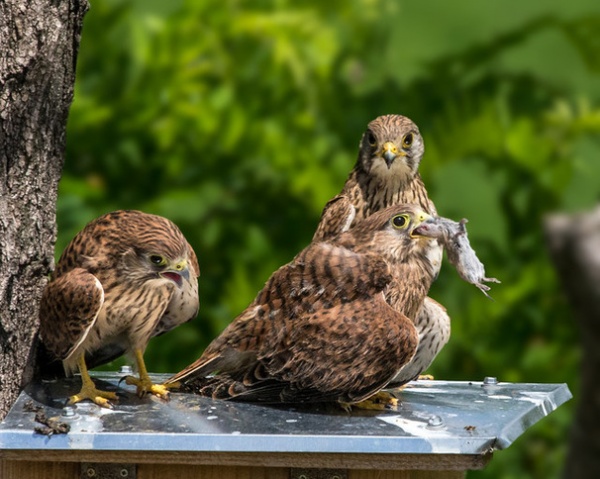
You may be rewarded with feisty chicks, like the three pictured here, to watch grow up next spring and summer, not to mention some complimentary rodent control as the parents keep up with the growing appetites of their chicks.
Hungry for more? Watch KestrelCam footage from this breeding season, listen to American kestrel calls or learn more about American kestrels.
YardMap is a citizen science project developed by the Cornell Lab of Ornithology, designed to cultivate a richer understanding of bird habitat, for both professional scientists and people concerned with their local environment. Thousands of people are documenting their conservation efforts at home to support birds and other wildlife in their yards.
Photo by Andy Morffew
More: Discover more ways to attract birds to your yard
Related Articles Recommended












